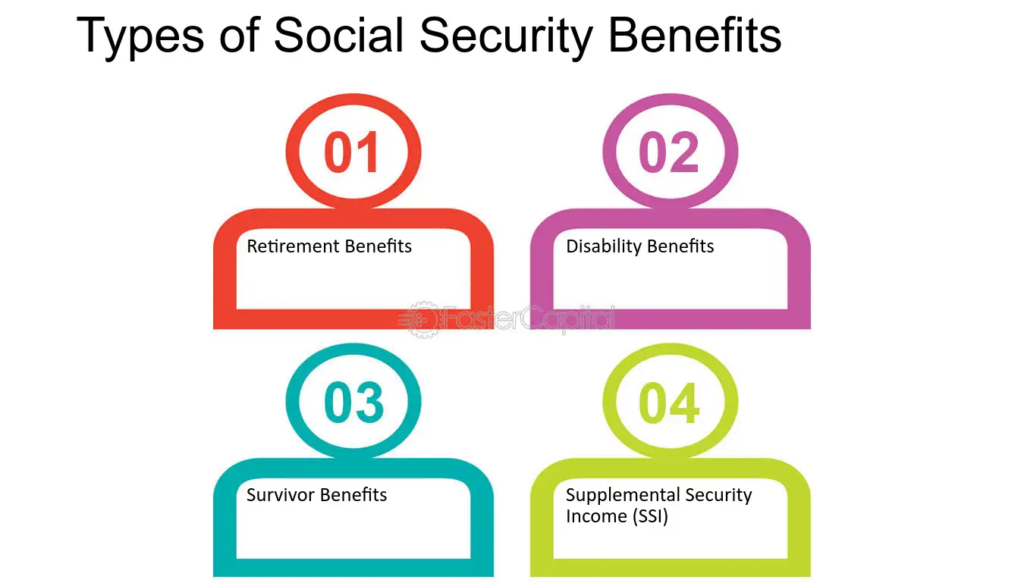Physical Address
304 North Cardinal St.
Dorchester Center, MA 02124
Physical Address
304 North Cardinal St.
Dorchester Center, MA 02124


Social Security benefits are a vital component of the American social safety net, providing financial support for retirees, disabled individuals, and survivors of deceased workers. The Social Security program has been a cornerstone of economic stability for millions of Americans since its inception in the 1930s. This article will provide a comprehensive overview of Social Security benefits, addressing key questions such as how the program works, who qualifies, and what happens if benefits are left unused.

What are Social Security benefits? In essence, they are monthly payments provided by the federal government to eligible individuals and families. The purpose is to replace a portion of income for those who have retired, are unable to work due to a disability, or have lost a family breadwinner. The Social Security Administration (SSA) manages the program, ensuring that funds are distributed accurately and fairly based on each recipient’s earnings record.
Social Security benefits are funded through payroll taxes collected under the Federal Insurance Contributions Act (FICA). Employees, employers, and self-employed individuals contribute a percentage of their earnings to the Social Security Trust Fund, which is then used to pay benefits to current recipients. This pay-as-you-go system ensures that those who are currently working fund the benefits of current retirees and other beneficiaries.

The Social Security program works as a form of insurance that protects against the loss of income due to retirement, disability, or death. When individuals work and pay Social Security taxes, they earn credits toward future benefits. Typically, individuals need at least 40 credits (equivalent to about 10 years of work) to qualify for retirement benefits.
When a person retires or becomes disabled, they become eligible to receive Social Security benefits based on their earnings record. The SSA calculates these benefits by taking into account the average indexed monthly earnings (AIME) of an individual over their 35 highest-earning years. A formula is then applied to determine the primary insurance amount (PIA), which is the basis for monthly payments.
For retirees, the age at which they begin to collect benefits significantly impacts the amount they receive. While the full retirement age (FRA) is currently 66 or 67, individuals can start collecting as early as age 62, though at a reduced rate. Conversely, delaying benefits until age 70 can increase the amount received monthly.

To qualify for Social Security benefits, individuals must accumulate sufficient work credits throughout their employment history. In general, individuals earn up to four credits per year, with one credit equating to a set amount of earnings (adjusted annually). Once an individual reaches 40 credits, they become eligible for retirement benefits.
For disability benefits, the requirements are more specific. Individuals must have a recent work history (depending on their age) and have worked long enough under Social Security. The SSA also evaluates whether the applicant meets its definition of disability, which requires that the individual be unable to engage in any substantial gainful activity due to a medically determinable physical or mental impairment that is expected to last at least one year or result in death.
Survivors of deceased workers may also qualify for benefits. These include spouses, children, and sometimes even parents, provided that they meet specific criteria outlined by the SSA.

There are several types of Social Security benefits designed to address different life circumstances:

Unused Social Security benefits do not accumulate in an individual’s account like savings. Instead, the Social Security system operates on a pay-as-you-go basis, meaning current workers’ contributions fund the benefits of current recipients. If a person passes away before claiming their benefits, those funds remain in the Social Security Trust Fund to support others.
However, family members, such as surviving spouses or children, may be eligible to receive survivor benefits based on the deceased worker’s earnings record. The eligibility for these benefits depends on the age and relationship of the survivors.
While Social Security benefits are exempt from federal taxes for lower-income individuals, some states impose their own taxes on these benefits. As of now, the states that tax Social Security benefits to some extent include Colorado, Connecticut, Kansas, Minnesota, Missouri, Montana, Nebraska, New Mexico, Rhode Island, Utah, Vermont, and West Virginia.
Each state has its own rules regarding exemptions, income thresholds, and taxation rates. For instance, some states tax Social Security benefits only if an individual’s income exceeds a certain level, while others provide deductions or credits for retirees.

Social Security benefits may be reduced if an individual continues to work while collecting benefits, depending on their age and earnings. For those who begin collecting before reaching full retirement age, benefits may be temporarily reduced if their earnings exceed a certain threshold. The SSA deducts $1 from benefits for every $2 earned above the annual limit. However, once an individual reaches full retirement age, their benefits are recalculated, and reductions cease.
Other types of income, such as pensions from non-Social Security-covered employment, may also impact benefits. For instance, if a person receives a government pension from work not covered by Social Security, their Social Security benefits may be reduced under the Windfall Elimination Provision (WEP) or the Government Pension Offset (GPO).

The SSA recalculates benefits annually based on updated earnings records and cost-of-living adjustments (COLAs). COLAs are designed to adjust benefits to keep pace with inflation, ensuring that recipients maintain their purchasing power despite rising prices. COLAs are typically announced in October and applied to benefits in January.
In addition to COLAs, benefits are recalculated when an individual reaches full retirement age if they have continued to work and earn wages while collecting reduced benefits. The SSA adjusts the benefit amount to account for any withheld benefits due to excess earnings.
The primary rationale for Social Security is to provide a financial safety net for individuals who are retired, disabled, or otherwise unable to work. The program was designed to alleviate poverty among older Americans and provide economic security for those who might not have had the opportunity to save sufficiently for retirement.
By pooling resources through payroll taxes, Social Security operates as a collective insurance program, spreading financial risks across a broad base of contributors. This model ensures that those who are no longer able to earn an income—due to age, disability, or the loss of a family member—can receive support. It is a cornerstone of social welfare policy in the United States.
Under most circumstances, Social Security benefits are protected from garnishment by creditors. However, there are exceptions. The federal government can garnish benefits to collect unpaid federal taxes, child support, alimony, or delinquent federal student loans. In such cases, the SSA will work with other agencies to deduct a portion of the monthly benefit to satisfy the debt.
It’s important for recipients to understand these exceptions, especially if they face legal or financial challenges, as garnishments can significantly affect their financial well-being.

If you lose your Social Security card, you can request a replacement through the SSA’s online portal or by visiting a local office. The process involves verifying your identity and providing the necessary documentation, such as a birth certificate or driver’s license.
A lost Social Security card poses a risk of identity theft. Therefore, it is essential to monitor credit reports and consider placing fraud alerts if you suspect someone is using your Social Security number fraudulently.
Yes, individuals can receive multiple types of Social Security benefits simultaneously, such as retirement and spousal benefits. However, the SSA typically limits the total amount to the higher of the two benefits rather than paying the full amount for each. For example, if a person is eligible for both their retirement benefit and a spousal benefit, they may receive a combination that equals the higher of the two, rather than the sum.
Calculated?
Social Security retirement benefits are calculated using a person’s 35 highest-earning years. The SSA takes the average indexed monthly earnings (AIME) from these years and applies a formula to determine the primary insurance amount (PIA). The PIA is the monthly amount a person would receive if they claimed benefits at full retirement age.
The amount received may be reduced or increased depending on when a person chooses to start receiving benefits. Collecting benefits before full retirement age results in a permanent reduction, while delaying benefits past the full retirement age (up to age 70) results in an increase due to delayed retirement credits.
Individuals can start collecting Social Security benefits as early as age 62. However, collecting benefits before reaching full retirement age results in a permanent reduction in the monthly amount. The full retirement age currently ranges from 66 to 67, depending on the year of birth. For those who choose to delay benefits past the full retirement age, monthly payments increase until they reach age 70.
Social Security benefits are an essential part of financial planning for millions of Americans, providing support during retirement, disability, and times of loss. Understanding how these benefits work and how they are calculated is crucial for maximizing their value. From knowing which types of income may reduce benefits to being aware of state-specific taxes, careful planning ensures that beneficiaries receive the support they are entitled to.